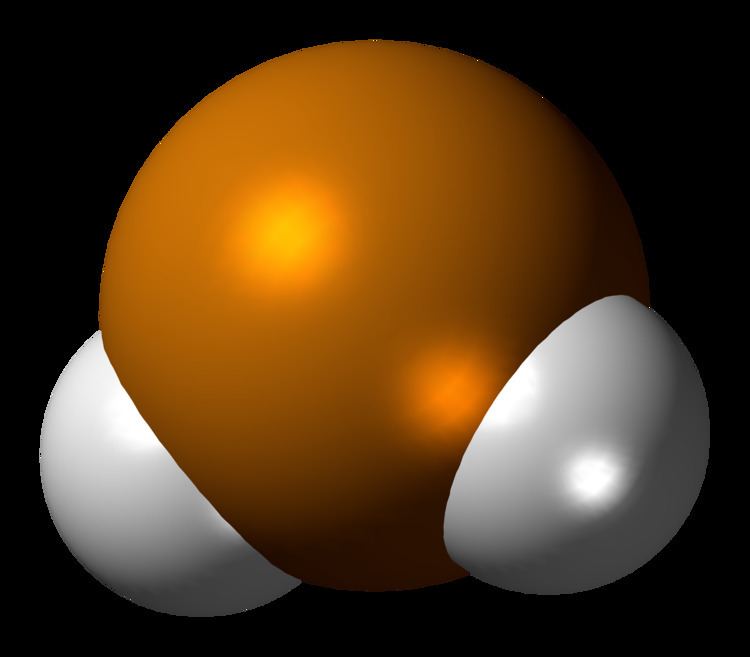Boiling point -2.2 °C Formula H2Te Density 3.31 g/cm³ | Melting point -49 °C Molar mass 129.6158 g/mol Appearance colourless gas | |
 | ||
Related compounds | ||
Hydrogen telluride (tellane) is the inorganic compound with the formula H2Te. A hydrogen chalcogenide and the simplest hydride of tellurium, it is rarely encountered because it decomposes rapidly to its constituent elements. However, the gas can exist at very low concentrations long enough to be readily detected by the odour of rotting garlic at extremely low concentrations; or by the revolting odour of rotting leeks at somewhat higher concentrations. Most compounds with Te–H bonds (tellurols) are unstable with respect to loss of H2. H2Te is chemically and structurally similar to hydrogen selenide, both are acidic. The H–Te–H angle is about 90°. Volatile tellurium compounds often have unpleasant odours, reminiscent of decayed leeks or garlic.
Contents
Synthesis
H2Te is prepared by the acidification of salts of Te2−, such as Al2Te3 and Na2Te. Na2Te can be generated by the reaction of Na and Te in anhydrous ammonia. The intermediate in the acidification, HTe−
, is a stable anion. Sodium hydrogen telluride, NaHTe, can be made by reducing tellurium with NaBH
4.
Preparation
Tellurium hydrides is usually prepared in the laboratory by hydrolysis of the telluride derivatives of electropositive metals. Typical is the hydrolysis of aluminum telluride:
Al2Te3 + 6 H2O → 2 Al(OH)3 + 3 H2TeMagnesium and alkali metal tellurides can also be hydrolyzed. Usually these procedures require acid since the H2Te is rather acidic. Electrolytic methods have been developed.
Properties
H
2Te is an endothermic compound, unstable in air and easily oxidised to water and elemental tellurium:
2Te + O
2 → 2 H
2O + 2 Te
It is almost as acidic as phosphoric acid (Ka = 8.1×10−3), having a Ka value of about 2.3×10−3. It reacts with many metals to form tellurides.
